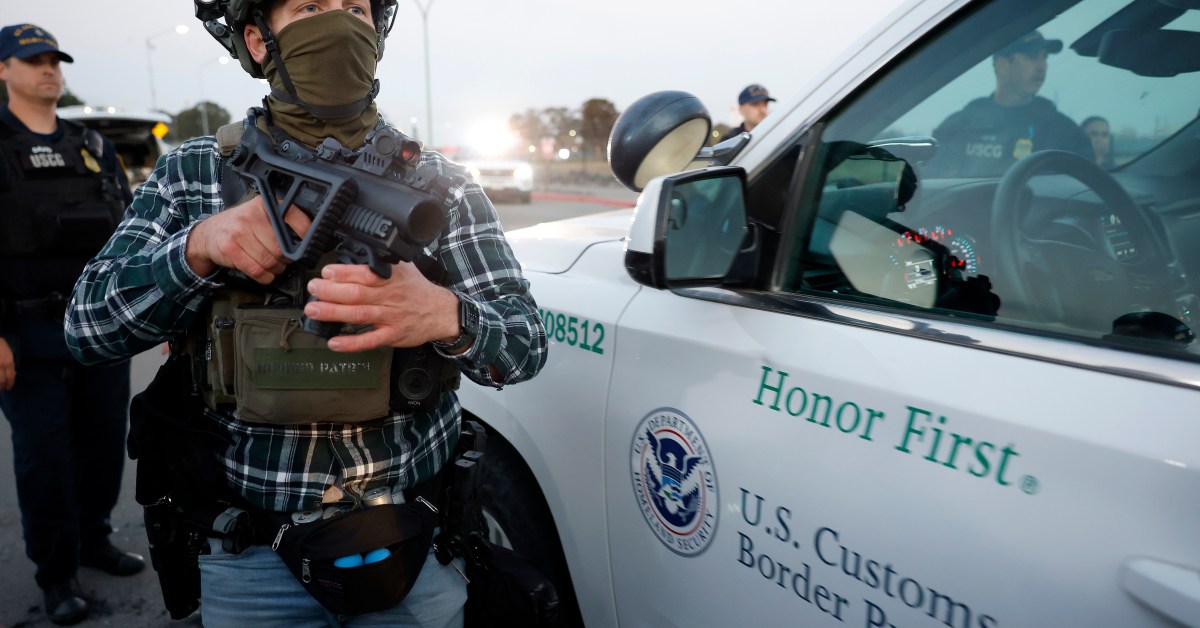On Thursday, October 23, the government deployed more than 100 federal agents, including U.S. Customs and Border Protection, to a U.S. Coast Guard base in Alameda. The movement, which was first reported by the San Francisco Chronicle, was widely seen as a precursor to the deployment of the U.S. National Guard in San Francisco, especially in light of efforts by the Trump Administration to deploy the national guard in cities like Chicago and Portland, Oregon, in recent weeks.
For now, San Francisco will apparently not see the national guard within the city’s borders; an October 23 press release from San Francisco mayor Daniel Lurie’s office stated that U.S. President Donald Trump has backed off of those plans in a late Wednesday phone call. “In that conversation, the president told me clearly that he was calling off any plans for a federal deployment in San Francisco,” the statement reads in part. Trump confirmed this sentiment via a Truth Social post and it was also separately confirmed by Secretary of Homeland Security Kristi Noem, according to the press release. “My team will continue to monitor the situation closely, and our city remains prepared for any scenario,” the mayoral press release continues.
It’s unclear how, or whether, this will impact CBP movements in other Bay Area cities, but border protection agents who landed at the Alameda U.S. Coast Guard base early Thursday morning were met with protestors upon their arrival. At least two people sustained injuries. A border protection agent allegedly shot clergyman Jorge Bautista in the face with a projectile from just five feet away. A vehicle heading onto Coast Guard Island also allegedly ran over a protester’s foot.
Protests are expected across the Bay Area including a 4 p.m. march and rally starting at Oakland’s Fruitvale Plaza and ending at Coast Guard Island Bridge, and a 5 p.m. protest at San Francisco’s Embarcadero Plaza, Oaklandside reports.
As news of federal movements in the Bay Area spread, the Golden Gate Restaurant Association, San Francisco’s restaurant lobbying group, released a list of tips and best practices for the hospitality industry. Food and restaurant workers are statistically likely to be impacted by raids. The American Immigration Council estimates that immigrants make up 22 percent of all U.S. workers in the food service industry, and according to the Center for Migration Studies, about 45 percent of U.S. agricultural workers are undocumented.
As the San Francisco Chronicle reports, “CBP officers are typically focused on stopping illegal immigration at ports of entry, while ICE agents are usually tasked with enforcing immigration laws within the nation,” and it’s not clear what is being planned by either agency.
In this uncertain moment, here are some resources to keep close at hand:
The City of San Francisco offers a document outlining rights regarding immigration enforcement, whether you’re stopped on the street or you are approached at your home.
Rapid Response Network for San Francisco raids
The San Francisco Rapid Response Network has a system in place to “respond to heightened enforcement actions” by ICE. The system includes:
24-Hour Hotline: The number is 415-200-1548. They have language capacity in Spanish, Arabic, and Chinese (both Cantonese and Mandarin). One dispatcher manages calls at a time, so if the line is busy, it is because the dispatcher on call is speaking with someone else. In order to make sure that SFRRN responds to callers in a timely manner, organizers ask that individuals calling use the line only to report ICE activity in San Francisco.Raid Verification: SFRRN does raid verification for all calls of alleged ICE Enforcement activity within San Francisco with the goal of dispelling myths and lessening fear. Organizers physically go and verify or announce false alarms to rumors about ICE activity.Attorney Activation: If an individual is detained after an ICE raid or ICE Activity SFRRN activates attorneys to go down to the 630 Sansome immigration processing center to file for representation of the individual. The organization will also work to secure long term representation if the person needs it.
Rapid Response Hotlines in other Bay Area counties
Alameda County: 510-241-4011 Contra Costa County: 925-900-5151 Marin County: 415-991-4545 San Mateo County: 203-666-4472 Santa Clara County: 408-290-1144 Santa Cruz County: 831-239-4289 Sonoma and Napa Counties: 707-800-4544
If ICE agents arrive at your business
What business owners and managers should do:
Do not run or tell any staff to run. Staff can move to a private space (such as the kitchen). Ask to see the agents’ ID and record this information. Ask for a warrant and closely review it. The address and business name should be correct, and the warrant must be signed by a judge. Agents are not allowed to enter private spaces of the business without permission. After reviewing the warrant, managers should tell agents that they do not have permission to allow them to enter private spaces, and they need to call the owner. Designate a person to call in the event of a raid.Employees should remain silent. Managers should not provide documents or answer questions. Employees should not answer questions about their immigration status. This information can be used against them at a hearing.If the agent detains any employees, ask for details regarding where the employee is being taken. The detained worker will typically have a right to a hearing before deportation.
Find additional information in Eater’s story, “What Should You Do if ICE Comes to Your Restaurant?”
Additional reporting by Rebecca Roland.

